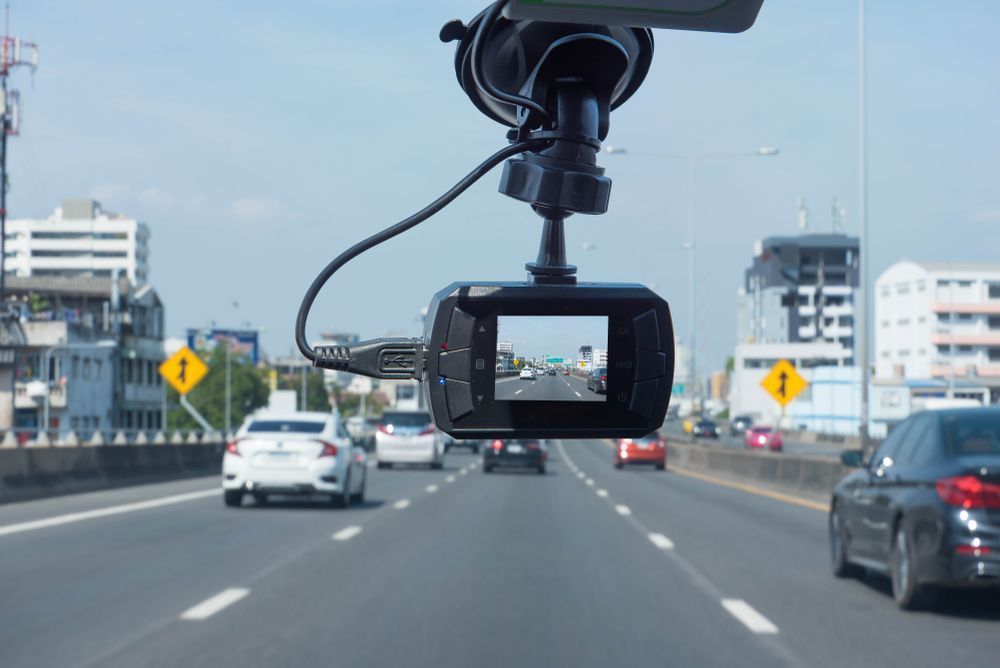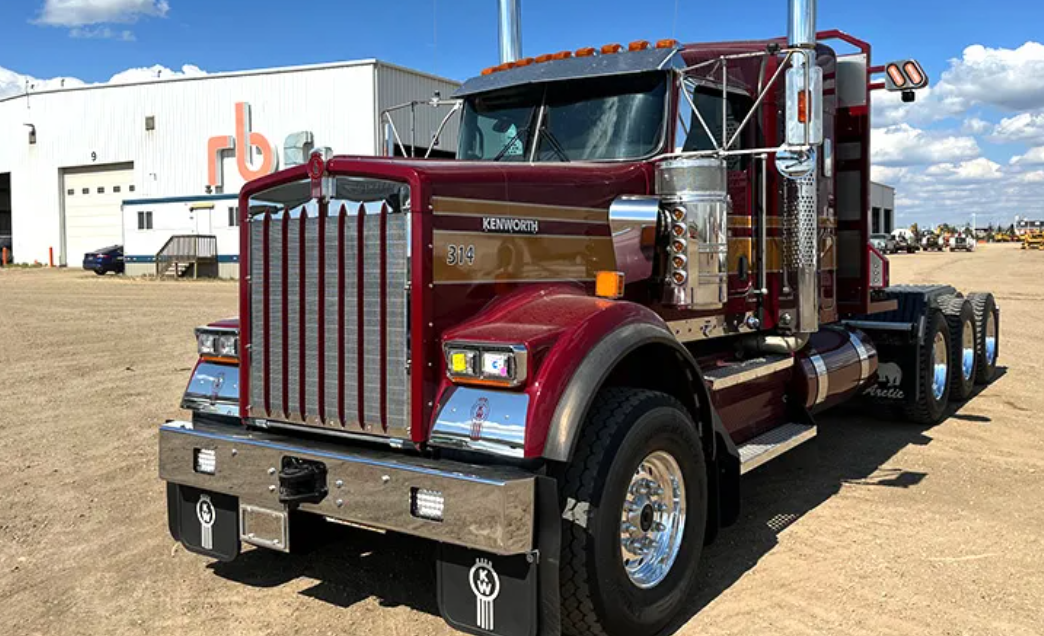The Ultimate Safety Guide for Over-the-Road Truckers
Share this Article:

Driving Tips for OTR Truckers
Navigating the vast network of highways and byways as an over-the-road trucker is both a privilege and a responsibility. The open road beckons with its endless possibilities, but with these opportunities come inherent risks. In the realm of transportation, safety is paramount, and for long-haul truckers, it takes center stage. As a driver, you are the beating heart of our interconnected society and supply chains – which is why it is so important that your safety both on and off the road remains a top priority.
Know Your Route
As a professional trucker you know how important it is to safely deliver on time, but delivering on time requires proper route planning. Knowing your route doesn’t just mean knowing how to get from “Point A” to “Point B,” you need to consider the type of cargo, distance, road conditions, traffic patterns, and legal restrictions such as weight limits and road accessibility for your big rig. More specifically certain cargo (hazardous cargo) and loads need special consideration in regard to routes, as some routes are restricted and some are preferred. Having a clear understanding of where you’re going helps reduce the likelihood of accidents due to last-minute lane changes or sudden braking.
You also need to factor in rest periods as mandated by hours-of-service regulations to ensure safety and compliance with laws. Advanced GPS and route planning software have become indispensable tools, offering real-time traffic updates, optimal route suggestions, and fuel-efficient paths. These tools assist in locating rest areas, repair services, and parking spots, which are crucial for long-haul trips.
Perform a Pre- & Post-Trip Inspection
Any seasoned truck driver can tell you that things can and often will go wrong when you least expect them. Because of that, pre-trip and post-trip inspections should be critical components of your routine. It is essential to ensure the safety and reliability of your truck before and after each journey.
These inspections involve a systematic check of key vehicle components such as brakes, tires, lights, and engine to identify any potential issues that could lead to breakdowns or accidents.
During a pre-trip inspection, you verify your rig is mechanically sound and safe

to operate, thereby reducing the risk of on-road failures and ensuring compliance with safety regulations. And before heading out on the road, you’ll want to ensure your load is well-balanced and secured. By doing this you will ensure any DOT inspection you undergo will be in full compliance with the law.
Post-trip inspections, on the other hand, help you identify any damage or wear that occurred during the journey, ensuring that maintenance needs are addressed promptly. Be sure to check your truck’s tire pressure, brake system, lights, and other important components before and after each trip. These inspections not only enhance road safety and other road users but also contribute to the longevity of the vehicle, improve fuel efficiency, and minimize costly downtimes.
Regular and thorough inspections are fundamental in promoting a culture of safety, responsibility, and preventive maintenance in the trucking industry.
Set a Schedule
Always make a plan when you’re going to drive. For example, when you’re going to take breaks and other elements of your day before you start your trip in the morning.
Setting a well-thought-out schedule is a crucial aspect of being a successful OTR trucker. Efficient time management not only ensures timely deliveries but also plays a pivotal role in promoting driver well-being and safety.
When crafting your schedule, consider the following factors:
- Hours-of-Service (HOS) Regulations: Adhering to HOS regulations is not just a legal requirement; it is a key component of road safety. Familiarize yourself with these regulations to avoid fatigue-related issues. Be mindful of your driving hours, rest breaks, and required off-duty periods.
- Peak Traffic Hours: Plan your routes to avoid heavy traffic whenever possible. This not only helps you stay on schedule but also reduces stress and fatigue associated with navigating congested roads.
- Delivery Windows: Coordinate with shippers and receivers to align your schedule with their operational hours. Knowing their expectations and time constraints allows you to plan more effectively, reducing the likelihood of delays and ensuring a smoother overall experience.
- Flexibility: While having a schedule is crucial, it’s equally important to be flexible. Unexpected delays, road closures, or detours can occur. Build in some buffer time within your schedule to accommodate unforeseen circumstances without compromising safety or delivery commitments.
Remember, safety should always be the top priority. Don’t succumb to the pressure of tight schedules if it jeopardizes your well-being or the safety of yourself and others on the road.
Avoid Distractions
Distractions constantly surround us, both within and outside the cab, diverting our attention from the road and essential driving practices. Distractions from inside the cab, such as dialing cell phones, texting, dealing with electronic logging devices (ELDs), eating, and adjusting radios, have the potential to jeopardize the safety of not only you but your fellow drivers as well.
If the need arises to engage in any of these activities, ensure you have ample leeway in front of your truck to give yourself enough time to react, break, or otherwise maneuver safely. Anything that diverts your attention for more than a few seconds is a distraction. In 3 seconds at 68 mph, your truck can traverse the length of a football field, goal post to goal post, and it takes roughly 532 ft at that speed to come to a complete stop. By staying focused and minimizing distractions you give yourself the best reaction times to a roadside emergency.
It is imperative to emphasize, however, that texting while driving is strictly prohibited. Always utilize hands-free devices for communication; this includes refraining from manually dialing a phone. When possible, utilize hands-free communication devices like text-to-speech and voice-activated calling, to help keep your eyes on the road and your hands on the wheel at all times. Keep in mind that the use of phones while driving any type of commercial vehicle is strictly prohibited by the FMCSA.
Listening to music, the radio, or your favorite podcast can help keep your mind active and avoid ‘highway hypnosis’ – but be sure to remain aware of your surroundings outside of the cab too. Your focus and attention should always be on threat recognition on the road. Minimize the time you spend taking in the sights and looking around by paying attention and minimizing distractions.
Use a GPS or Map
If you’ve been following our guide thus far, you know the importance of planning out your route ahead of time. However, unexpected road closures, heavy traffic, or even small accidents can cause delays that significantly impact your schedule, costing both time and money.
To mitigate these challenges, it’s crucial to have a reliable navigation system in your cab. Investing in an updated GPS provides real-time traffic updates, optimal route suggestions, and alerts about potential road issues. This modern technology can be a game-changer, helping you navigate efficiently and make informed decisions to avoid delays.
While your smartphone can serve as a useful tool for navigation, opting for a dedicated GPS device provides a distraction-free driving experience by eliminating the temptation to interact with your phone. This promotes safer driving practices and reduces the risk of accidents caused by distracted driving.
Moreover, it’s wise to keep an ‘old-school’ paper map as a backup. In the event of electrical or signal failure, a paper map can be your lifesaver, ensuring that you stay on the right track even when faced with technological glitches.
Being prepared with both high-tech and traditional navigation tools ensures that you have reliable options, allowing you to stay on the road and headed toward your destination regardless of the circumstances. This dual approach enhances your adaptability and readiness for any unforeseen challenges during your journey.
Invest in a Dash Cam

While most of us consider ourselves to be the safest, most experienced drivers on the road, accidents can happen at any time. This can even happen through no fault of your own. In the event that your truck is in an accident, you need to make sure that you remain protected, which is what a dash cam will help significantly with.
Sometimes, you’ll be dealing with unjust accusations – someone else was negligent, but they think they can get away with it by blaming the truck driver. Other times, you may be subject to legal penalties after an accident unless you can prove certain facts about the situation.
Moreover, a high-quality dash cam can offer numerous benefits such as improved safety, reduced insurance premiums, and protection against theft.
However, they also come with some drawbacks, including privacy concerns, cost, distraction, and legal complications. As with any new technology, it is important for drivers to carefully consider the pros and cons before investing in a dash camera.
Take Breaks
Driver fatigue is another issue that is absolutely no joke on the open road and is a common problem among OTR drivers. It’s another leading cause of truck-related accidents, and it’s something that new drivers in particular tend to underestimate.
According to Federal Motor Carrier Safety Administration (FMCSA) regulations, you should take a 30-minute break for every 8 hours of driving and should not drive for more than 11 hours within a 14-hour period. To reset these time limits, you need at least 10 hours of time off the road, which can be spent eating, enjoying relaxing activities, communicating with friends and loved ones, and most importantly, sleeping.
Secure Your Load
Securing your load is a part of trucking and vital for your safety, the integrity of the cargo, and the protection of other road users. Proper load securing involves using appropriate restraints like straps, chains, and binders to ensure that the cargo is firmly anchored to the trailer, minimizing movement during transit. You need to account for proper weight distribution, type of cargo, and the dynamics of motion that the load might experience during travel, such as during sudden stops, sharp turns, or uneven road conditions. Failure to secure loads properly can lead to cargo damage, accidents, fines, and legal liabilities. Effective load securing is not just a regulatory requirement but a fundamental practice in ensuring your safety.
In addition to securing the load for movement, you should also secure the load by checking trailer seals, making sure they are not broken and properly secured. If the shipper doesn’t provide a seal, use your own seal, and have the shipper mark it on your BOL. It generally removes responsibility from you and the carrier for anything shipped that might be missing on the BOL.
Also, secure your trailer by using padlocks as well. Cargo theft has been rising over time since the pandemic, and it is important to protect your load and yourself from theft.
Truck Maintenance
Believe it or not, maintenance-related issues are considered to be the leading cause of tractor-trailer-related accidents in the United States. Because of that, you’ll want to stick as closely to all vehicle and equipment maintenance schedules as possible.
These maintenance schedules are intended to help you keep up with the normal wear-and-tear of critical components on your vehicle. They’re the key to operating a commercial vehicle as safely as possible, which is why they should never be considered an afterthought.
Use Safety Equipment
Ensuring your safety and the safety of others on the road involves more than just following regulations; it requires the proper use of safety equipment. Here are key safety items every over-the-road trucker should prioritize:
- Seat Belts: Always wear your seat belt. It is your first line of defense in case of an accident and is a fundamental safety practice. Ensure that your seat belt is properly fastened before hitting the road.
- Reflective Clothing and Cones: When outside the cab, especially during inspections, breakdowns, or loading/unloading, wear reflective clothing. This makes you more visible to others, particularly in low-light conditions or during nighttime activities.
Keeping reflective cones in your truck can also be a useful tool. In the event of an emergency or breakdown, these items help alert other drivers and create a safer area around your truck.
- Fire Extinguisher: Carry a fully charged and properly rated fire extinguisher in your cab. Being prepared to handle small fires can prevent them from escalating into major emergencies.
- Emergency Kit: Have a well-equipped emergency kit on hand. This should include essentials such as a flashlight, emergency flares, basic tools, first aid supplies, and non-perishable food and water. Be sure to regularly check and replenish the items in your emergency kit.
- Weather-Appropriate Gear: Depending on the regions you traverse, be prepared for various weather conditions. Have appropriate gear such as rain jackets, cold-weather clothing, and blankets to ensure your comfort and safety during adverse weather.
- Personal Protective Equipment (PPE): If your job involves handling cargo, make sure you have the necessary PPE, such as gloves and safety goggles, to protect yourself from potential hazards.
Situational Awareness
Situational awareness is about more than just using your turn signal every time you make a turn in your truck. It’s about knowing what is going on around you at all times and properly reacting to it.
Professional truckers are required to monitor where their truck is in space. This means monitoring lane conditions, speed, mirrors, blind spot awareness, and “No-Zones”. Checking mirrors every 5-8 seconds and mirrors before making a turn or lane change. You need to defensively drive when you are an 80,000-pound behemoth barreling down the road.
Besides, using turn signals and other indicators, leave yourself with adequate space and time to make any maneuvers you will need to make. The majority of accidents truckers get into while making a lane change are caused by

passenger vehicles, but it is up to you as a professional to be more aware of your surroundings than others, since you are unable to react to other drivers’ mistakes quickly enough in your rig.
Respect the Weather
Adverse weather conditions can significantly increase the risk of accidents. It’s important that you be on the lookout for any weather systems that might affect your travel times, or ability to deliver on time. Notify dispatchers and fellow truckers of weather conditions if they are unaware of it.
In case of heavy rain, fog, snow, or high winds, slow down and increase your following distance. If conditions worsen, pull over in a safe place and wait it out.
Safe Following Distance
A lot of passenger vehicle drivers on the road don’t necessarily realize how difficult it is for a tractor-trailer to stop. They can’t just stop on a dime – it takes some time and distance to even slow down. The general rule of thumb is that you need a minimum of 4-5 seconds between you and the vehicle ahead of you. This means at 70mph you need nearly 350-400 feet to stop. Most accidents involving truckers that were considered ‘at fault’ were a result of truckers rear-ending other vehicles. Because of that, you’ll want to maintain a safe following distance from any vehicle in front of you during a trip. Don’t assume that they’ll stay away from you. Instead, take matters into your own hands and set a safe following distance.
The same is true of a car accident that you are quickly coming up on. Even if the cars themselves have already been moved off to the side of the road, there could still be debris on the road that could cause damage. This is why it’s always important to pay attention, anticipate potential hazards, make appropriate adjustments, and on keep trucking.
Follow Traffic Laws and Observe Weight Limits
Always observe posted speed limits, not just to avoid fines but to reduce the risk of accidents and help keep all drivers on the road safe. Respect traffic signals, stop signs, and other road indicators, as they provide critical information for safe navigation. Also, proper lane discipline and the use of turn signals contribute to a harmonious flow of traffic and minimize the potential for collisions.
It’s equally crucial to be aware of weight limits imposed by regulations. Overloaded trucks not only pose risks to the driver but also to other motorists. Regularly check your cargo weight and distribution to ensure compliance with legal limits. Additionally, be mindful of height restrictions, especially when passing under bridges or entering tunnels. Following these guidelines ensures that you contribute to a safer and more efficient road environment, promoting not only your well-being but also that of fellow road users.
Continuous Training

Staying updated with industry best practices and honing your skills through continuous training is a cornerstone of a successful and safety-conscious trucking career. In an industry where regulations and technology are constantly changing, staying informed and up-to-date is key. Regular training helps you keep up with any updates to local, state, and federal rules, making sure you follow the law and steer clear of trouble.
For example, additional or supplementary defensive driving courses provide valuable insights into risk assessment and accident prevention, contributing to heightened awareness on the road.
And for those handling cargo, staying updated on best practices for securing
and transporting loads can be crucial for maintaining safety standards. Furthermore, training for emergency response situations helps you to efficiently handle unexpected situations, minimizing risks and ensuring the safety of yourself and others.
Beyond technical skills, continuous training can also encompass health and wellness topics, crisis management, and customer service skills, all of which contribute to your personal growth and the overall improvement of the trucking community.
Drive with Bloom Services
At Bloom Services, our OTR trucking jobs are designed to give professionals the freedom and flexibility that they simply cannot find anywhere else. Our truckers enjoy newer trucks, better pay, and the ability to own their own truck after three years. So if you’d like to find out more information about essential safety tips for truck drivers, or if you have any additional questions you’d like to go over in more detail, reach out to us today.



